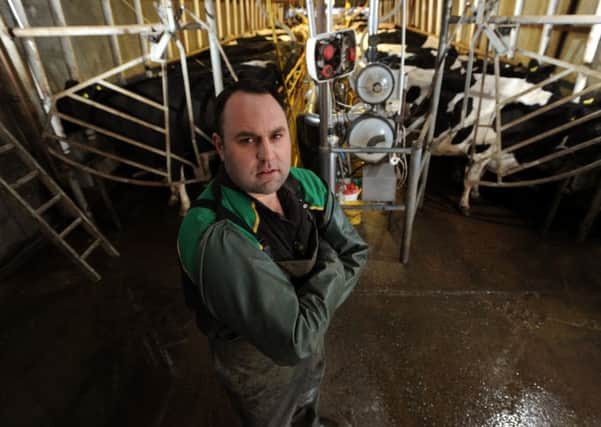Dairy processors accused of holding back recovery


New government figures show the UK’s average milk price increased for a fourth month in a row in October to 24.17 pence per litre (ppl) - a 6.7 per cent uplift on September prices.
Yet the more positive outlook, as European milk production responds to incentives to ease, is not being felt in real terms on farms, with many UK dairy farmers worse off than they were 12 months ago - October’s average milk price was 1.1 per cent lower than the same month last year.
Advertisement
Hide AdAdvertisement
Hide AdThe UK dairy market has responded to the rebalancing of global supply with small monthly price rises, and Tom Rawson, regional dairy board chairman at the National Farmers’ Union (NFU) accused processors of not being bold enough.
Arla Foods raised its milk price to owners by a further two eurocents per kilo from December 1. When applied to the UK standard litre, the co-operative’s fourth consecutive price increase equates to a 1.49ppl rise, to 24.63p.
Müller is adding 2.5ppl to its milk price, following a 2ppl uplift this month. The latest announcement means Müller suppliers will have seen their headline milk price increase by an average of 7ppl in the four months since October 1.
The price paid to Müller’s farmers on non-aligned contracts for January is expected to be 26.54ppl.
Advertisement
Hide AdAdvertisement
Hide AdMeanwhile, First Milk has confirmed a milk price rise of 2.5ppl for its Midlands and East Wales pool, and by 2ppl across all its cheese and other liquid and cheese pools. It means the average price increase across First Milk’s main milk pools is over 8ppl since June.
Mr Rawson, who runs a dairy operation near Dewsbury, said he had seen consistent monthly price rises of around 1.5ppl for some time from Arla but said he is disappointed that producers have not enjoyed greater dividends as European milk production has slowed.
Mr Rawson said: “The milk price is just not coming up quickly enough. There is a reason for this. With Arla operating a currency smoothing mechanism, this was helpful in the downturn but not on the way up.
“A lot of the other processors base their prices on Arla’s price, but they shouldn’t because they don’t operate a currency mechanism like Arla does, so the price they should be paying out should be more.”
Advertisement
Hide AdAdvertisement
Hide AdMr Rawson added: “It raises serious cashflow implications for farmers who are at rock bottom. Speaking personally, I think our farmers are quite tired. Normally when the price rises they are feeding their cattle more and getting more cows, but I don’t think the average farmer is doing that. I think many are fed up.”
The farmer said he expects small price rises to continue through the winter but was unsure what to expect come the spring flush.
Arla Foods amba board director, Johnnie Russell, said: “European markets are continuing to strengthen, following the reduction in milk production and we are seeing further positive signals from our international markets.”
Global dairy commodity prices are expected to continue to rise in 2017 due to reduced milk supplies and improved import demand, reports financial services group Rabobank.
Advertisement
Hide AdAdvertisement
Hide AdIt predicts producers will struggle to significantly expand production to take advantage of rising prices until at least the second quarter of the new year.
But Rabobank also warned that the effect of the European Commission’s milk production reduction scheme was still uncertain. Participants could choose to produce to receive the market price, rather than taking reduction payments, it said, and if the scheme’s usage is lower than anticipated, milk production could recover earlier than expected.